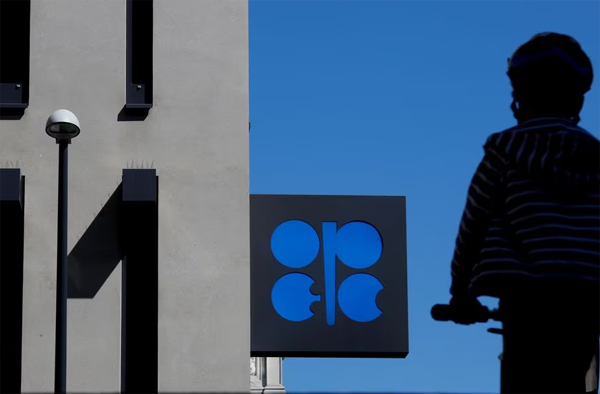
Myra P. Saefong and Barbara Kollmeyer, MarketWatch
SAN FRANCISCO/NEW YORK
EnergiesNet.com 04 04 2023
Oil futures climbed on Tuesday, with U.S. prices settling at their highest since January.
The move marked an extension of a 6% rally a day earlier, which was driven by a surprise Sunday decision by Saudi Arabia and several of its OPEC+ allies to collectively cut crude production by more than a million barrels a day.
Price action
- West Texas Intermediate crude for May delivery CL.1, 0.35% CL00, 0.35% CLK23, 0.35% rose 29 cents, or 0.4%, to settle at $80.71 a barrel on the New York Mercantile Exchange. That was the highest front-month finish since Jan. 26, according to Dow Jones Market Data.
- June Brent crude BRN00, +0.38% BRNM23, +0.38%, the global benchmark, added a penny to settle at $84.94 a barrel on ICE Futures Europe, the highest since March 6.
- Back on Nymex, May gasoline RBK23, 0.74% declined by 0.7% to $2.7371 a gallon.
- May heating oil HOK23, 0.82% added nearly 0.2% to $2.6667 a gallon.
- May natural gas NGK23, -0.71% edged up by 0.4% to $2.106 per million British thermal units.
Market drivers
Brent and WTI both soared more than 6% on Monday after Saudi Arabia and other OPEC+ members announced Sunday that they would make production cuts totaling around 1.16 million barrels a day beginning in May, while Russia said it would extend a March cut of 500,000 barrels a day through the end of the year. OPEC+ is made up of the Organization of the Petroleum Exporting Countries and its allies, including Russia.
See: Why OPEC+ cut oil production: 6 things investors need to know
“The OPEC+ cut to oil output was no surprise fundamentally, but the way OPEC+ negotiated and announced the cut, and the timing of it, was unexpected; a harbinger of surprises to come,” said Bhushan Bahree, executive director, oil markets, Downstream and Chemicals Team at S&P Global Commodity Insights.
“Our base case for this year had already assumed OPEC+ would first cut production this May,” and then increase output later in its quest for $80-plus a barrel oil, he said in emailed commentary, adding that a potential production increase would depend on the extent of oil demand growth this year, particularly in China.
Bahree also said there is “no reason to any longer assume that scheduled meetings of OPEC or OPEC+, in-person or virtual, are the only occasions for group decision-making.” A “subset, or subsets of OPEC or OPEC+ countries can come together to voluntarily adjust production within the overall framework of a formal agreement and output targets.”
The next full OPEC+ ministerial meeting is scheduled for June 4.
Still, some analysts warned that the OPEC+ decision could actually lead to lower oil prices.
“The cuts come with serious implications, particularly when it comes to inflation,” said Anne Slattery, industrials senior analyst at assurance, tax, and consulting firm RSM US. Reducing the output of oil on the global market “creates an imbalance between supply and demand that could fuel inflation.”
Read: What surprise oil-production cuts mean for the Fed’s rate plans and markets
That, in turn, “could cause demand destruction through higher prices,” she said. So while there may be a short-term price spike, the longer-term impact of the production cuts is “bearish for oil prices.”
For now, the oil market remains “flush” with inventories, said Manish Raj, managing director at Velandera Energy Partners. However, the announced output cuts will “turn the market to a deficit in the second half.”
Actual compliance with the cuts is a “another story altogether,” he said. “Whereas Saudi Arabia, UAE and Kuwait are steadfast in their compliance, the rest of the pack that includes Iraq, Kazakhstan and Algeria have iffy track record and are unlikely to comply voluntarily.”
Meanwhile, Iraq’s agreement to resume Kurdistan production “makes it highly unlikely that it will forego its oil revenue, despite the promises,” said Raj.
Looking ahead, weekly data from the Energy Information Administration on U.S. petroleum supplies will be released Wednesday.
On average, analysts polled by S&P Global Commodity Insights expect to see an inventory declines of 7.5 million barrels for domestic crude, 1.3 million barrels for gasoline, and 140,000 barrels for distillates.
marketwatch 04 04 2023












